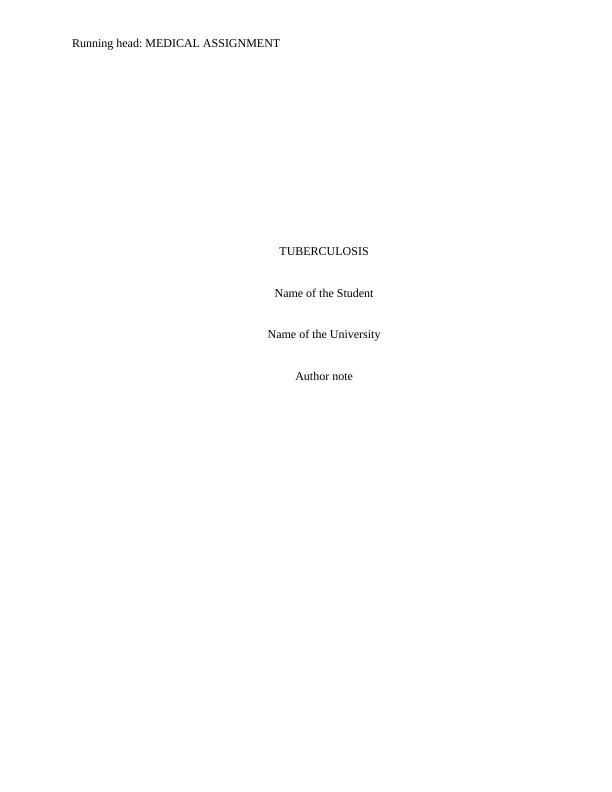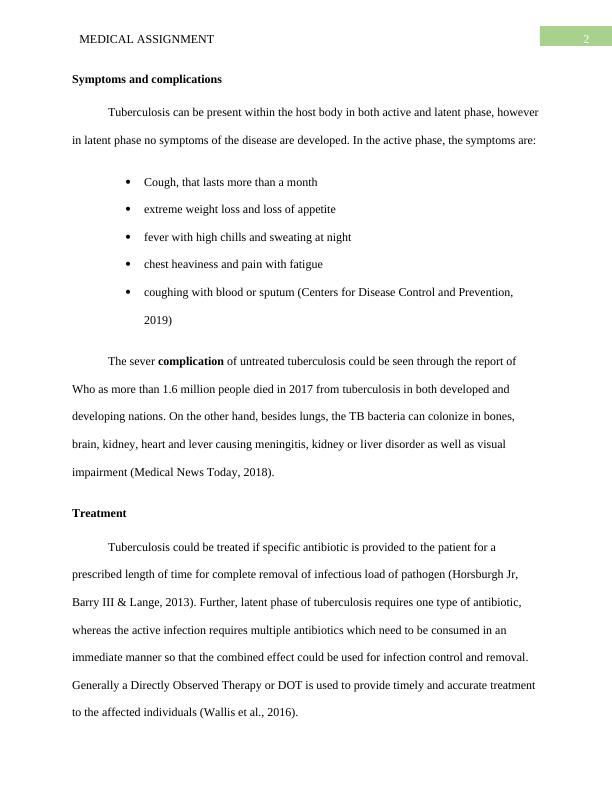Tuberculosis: Causes, Symptoms, and Treatment
Added on 2023-04-21
8 Pages1669 Words483 Views
End of preview
Want to access all the pages? Upload your documents or become a member.
Epidemiology of Tuberculosis among individual more than 18 years in African Countries between 2005-2015
|15
|3052
|211
Immune Response To Mycobacterium Tuberculosis
|12
|3893
|17
Communicable Disease - Tuberculosis
|8
|2254
|24
Tuberculosis: A Global Epidemic
|7
|919
|293
Disease and Body Defence: Categories, Transmission, Worldwide Importance, Tuberculosis and Antibiotic Treatment
|13
|1048
|475
Epidemiology of Tuberculosis: Outbreak, Treatment, and Prognosis
|11
|3140
|478



